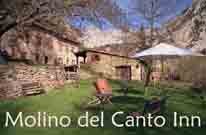Although for the men not yet it is thus, for the nature and the birds yes.
The songs of several species of birds are listened to, Tits, Warblers, Dipper...as well as some of them are seen taking elements of construction for the nest (moss in the case of the Wren, Troglodytes troglodytes).

Also there are numerous news of migration, Geese – mainly Greylag Goose, (Anser anser), and Cranes – Common Crane (Grus grus) - towards the north of Europe and Martins and Swalows arriving from Africa, shorebirds throughout coast line and wetlands, raptors flight on the migratory road.

































